Organic Label Pete and Gerry's Rolls Out Reusable Egg Cartons


Organic egg producer Pete and Gerry’s is the first in its industry to test reusable egg cartons. They're made from recycled, BPA-free plastic and cost $3, but using them will give customers a discount on their dozen eggs.
"Reusable cartons are a logical next step in our ongoing commitment to sustainability, moving consumer behavior from recycling to reuse,” said Jesse Laflamme, CEO of Pete and Gerry’s, in a press statement. “We plan to expand this program in 2020 to reach even more consumers and amplify the program's impact with major retailers clamoring for this type of sustainable innovation."
The certified B Corporation has been piloting the initiative at Hanover Co-op Food Stores in New Hampshire and Vermont over the past six weeks. Customers are "loving the idea that [the cartons are] robust, and they can cut down on their waste,” Laflamme told Fast Company. And he hopes other retailers will make space for the cartons as well.
As the largest U.S. producer of free-range, organic, Certified Humane eggs, the brand can be found at major retailers in almost every market, including Target, Safeway and Walmart. Though Whole Foods may be the next logical partner for the reusable roll-out because of its sustainability-minded clientele, Laflamme told FastCompany.
 (Image: Pete and Gerry's reusable egg cartons are available for purchase at designated retail displays and can be refilled with loose eggs elsewhere in the store.)
(Image: Pete and Gerry's reusable egg cartons are available for purchase at designated retail displays and can be refilled with loose eggs elsewhere in the store.)
Reusable options take hold in the retail sector
Reusables are coming into fashion across the retail sector. You’d be hard pressed to find a disposable grocery bag in many states. Californians and Hawaiians are already used to bringing their reusable totes on shopping trips. And some cafes offer discounts when customers forgo the disposable cup, lid and sleeve for their own reusable mug.
Legislation and incentives haven’t gone much further than bags and cups yet, but that doesn’t mean customers don’t appreciate zero-waste options from the brands they love and the stores they patronize. The public is waking up to the political complexities of recycling, and many recognize that putting an item in the recycling bin doesn’t necessarily mean it will be recycled, especially as waste export markets shrink.
Instead of relying mostly on recycling to keep their ecological footprints small, many consumers are beginning to reduce waste on their own—and research indicates they expect brands to help them. Sixty percent of U.S. consumers want packaging options that don't involve single-use plastic, according to a recent survey. In the U.K., around half of consumers say they're willing to pay more for the privilege of leaving single-use behind.
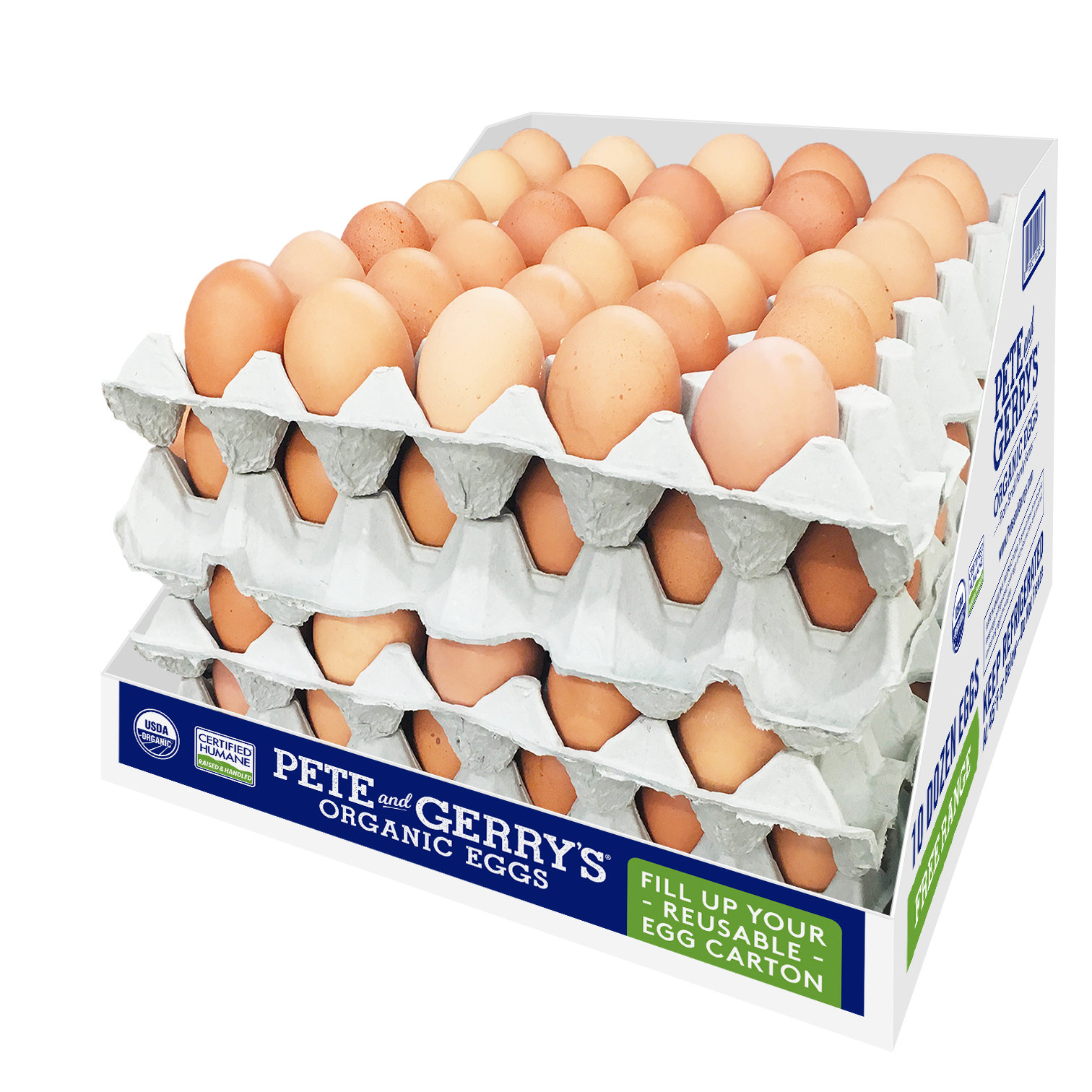 (Image: Once they've purchased a reusable carton, shoppers can fill it up at a Pete and Gerry's display of loose eggs which are discounted from a standard dozen, allowing the carton to pay for itself over time.)
(Image: Once they've purchased a reusable carton, shoppers can fill it up at a Pete and Gerry's display of loose eggs which are discounted from a standard dozen, allowing the carton to pay for itself over time.)
"Reuse is even better than recycling..."
For its part, Pete and Gerry’s has been chasing more sustainable packaging for years.
The company launched recycled plastic packaging in 2012 based on third-party lifecycle analyses. Canadian research company Quantis found clear recycled PET packaging to be either “superior” or “vastly superior” in most cases, compared to to pulp or polystyrene, when considering environmental and human factors. And if customers don’t have the option of recycling plastic in their area, Pete and Gerry’s takes back their cartons for free.
"Our consumers expect Pete and Gerry's to be on the leading edge of sustainability," said Laflamme. "Like many other consumer packaged goods companies, we recognize that reuse is even better than recycling, and we're proud to be at the forefront of this growing movement to help reduce the impact of packaging on the planet.”
“This is a pilot program, but we are emboldened by the initial results and committed to new ways of thinking about how we deliver on our promise to be a responsible force for good."
Image credits: Erol Ahmed/Unsplash and Pete & Gerry's
3 Reasons To Be Optimistic After a Disappointing COP

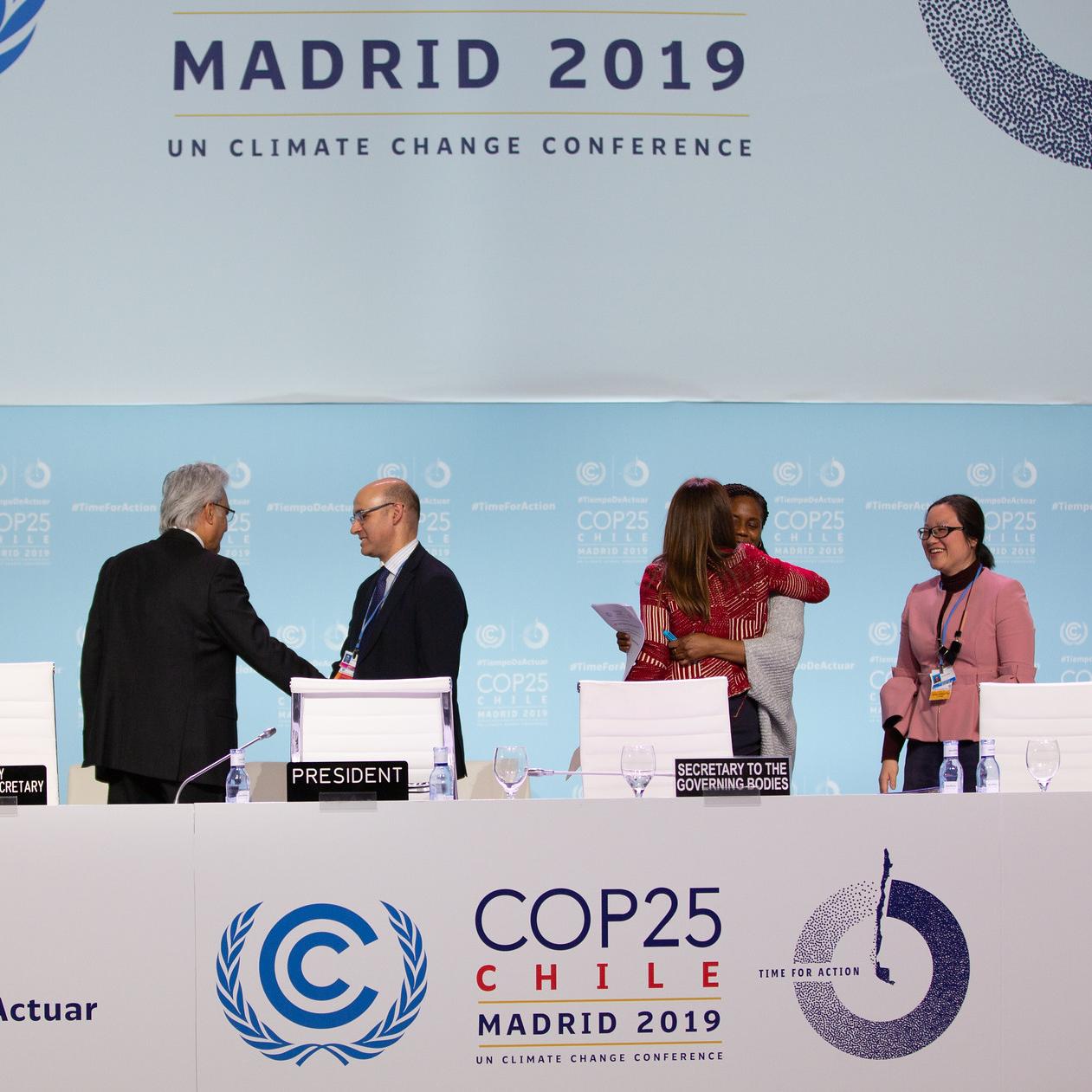
The dust from COP25 has settled in Madrid, and after two weeks of negotiations we’re left with an outcome that leaves much to be desired.
The parties to the negotiations—nearly 200 governments—failed to bridge the ambition gap between what the climate science demands and the world’s current trajectory. They also failed again to iron out the details of vital carbon market mechanisms under Article 6 of the Paris Agreement, as well as rules of the road for compensating the most climate-vulnerable nations for the harms they suffer.
Above all, world leaders failed to act on the clarion call for increased action heard from all sectors of society and every corner of the world, both inside and outside the halls of COP25. In the end, the efforts of countries comprising what is known as the “High Ambition Coalition,” from low-lying island nations to the European Union, were stymied by a handful of countries that have made outsized contributions to global emissions, such as the U.S.
While there is no use sugarcoating any of this, it’s important we don’t lose sight of what gave us hope at COP25. Here are just a few key indicators of progress associated with this COP that we can build on as we head into 2020, a critically important year for tackling the climate crisis.
1. Investors are mobilizing on climate action more than ever before
While governments did not collectively send a strong signal at COP25, the world’s most influential investors did. A record 631 institutional investors, with more than $37 trillion in assets, urged governments to close the climate ambition gap, including by phasing out thermal coal, putting a meaningful price on carbon, ending subsidies for fossil fuels, and strengthening nationally-determined contributions to meet the goals of the Paris Agreement.
Investors made their statement to governments at a COP25 side event focused on the Investor Agenda. Global investors including BNP Paribas, Aviva Investors, PKA Pension Fund, California's pension and teacher retirement funds, and others highlighted their commitments to accelerate the transition to net zero emissions. The event also featured Denmark’s Climate Ambassador, Tomas Anker Christensen, announcing the new Climate Investment Coalition to scale private investment in clean energy and climate solutions in the decade ahead, building from the US$50 billion commitment put forth by Danish pension funds in September.
Through a range of COP25 events, several investors actively involved in Climate Action 100+ —the world’s largest investor-corporate engagement mobilization to date—were able to illuminate the considerable inroads the effort has spurred in the last year alone. Other investors and financial institutions discussed their commitments to stop funding new coal and fossil fuel projects—including the European Investment Bank’s groundbreaking commitment to cease funding coal, oil and natural gas projects by the end of 2021.
Investors also took stock of the rapidly expanding market for green bonds, with well over US$200 billion in green bonds issued in 2019 that are either certified by the Climate Bonds Initiative (CBI) or aligned with CBI criteria.

(Image: The U.S. Climate Action Center at COP25.)
2. Companies are committing to net-zero emissions and advocating for a price on carbon
In the absence of U.S. leadership at the national government level, 75 U.S. CEOs, along with union leaders representing 12.5 million workers, publicly declared their support for the Paris Agreement ahead of COP25.
Just a few days later, members of We Are Still In showcased their climate leadership actions at the U.S. Climate Action Center. The coalition is made up of more than 2,200 U.S. companies and investors, as well as hundreds of other city, state, university, indigenous, faith, youth and civil society leaders. Over four full days of programming, companies like Microsoft, Mars, Salesforce, Schneider Electric and Ingersoll Rand made it clear that when it comes to the Paris Agreement, the Trump administration does not represent the business community.
That spirit of diversified, multi-constituency leadership has caught on beyond the U.S. as well, inspiring similar coalitions of “sub-national” leaders in Brazil, Japan, Mexico, and South Africa.
Many of the companies and investors at the U.S. Climate Action Center also voiced their strong support for adopting robust carbon pricing, efforts that are all the more critical after negotiators failed to agree on carbon market mechanisms. What’s more, some 177 companies from around the world have made commitments to adopt a science-based target in line with capping temperature rise at 1.5 degrees Celsius, the new standard for corporate climate commitments.
 (Image: Youth activists commander the stage at COP25.)
(Image: Youth activists commander the stage at COP25.)
3. Public pressure for climate action at the necessary speed and scale has never been stronger
The voices of the people—particularly of the young, indigenous, and those most vulnerable to the impacts of climate change—were raised loudly and clearly. People of all ages and backgrounds filled the halls of COP25 and the streets of Madrid, demanding those in power take action at the scope and scale the science demands.
Student climate striker Greta Thunberg, fresh off her return trip across the Atlantic by sailboat and on the eve of being named Time magazine's Person of the Year, shared her spotlight with allies from the global North and South. She decried “creative accounting” that masked a lack of progress, saying: “This is not leading, this is misleading.”
These voices—though frustrated and sometimes angry—are crucial for helping demand that governments wake up to the urgent need. They laid bare the ambition gap, illuminating not just how far behind governments are, but also how mobilized and aligned the rest of the world has become.
Ultimately, although this COP fell far short of what should have been, these indicators of progress give reason for hope and provide a strong foundation for a redoubling of efforts in the run-up to COP26 in Glasgow. Governments have no choice but to align themselves with the rest of the world and swiftly close the climate ambition gap.
Image credits: UNClimateChange/Flickr
Companies Are Making Progress on Human Rights, Expert Says

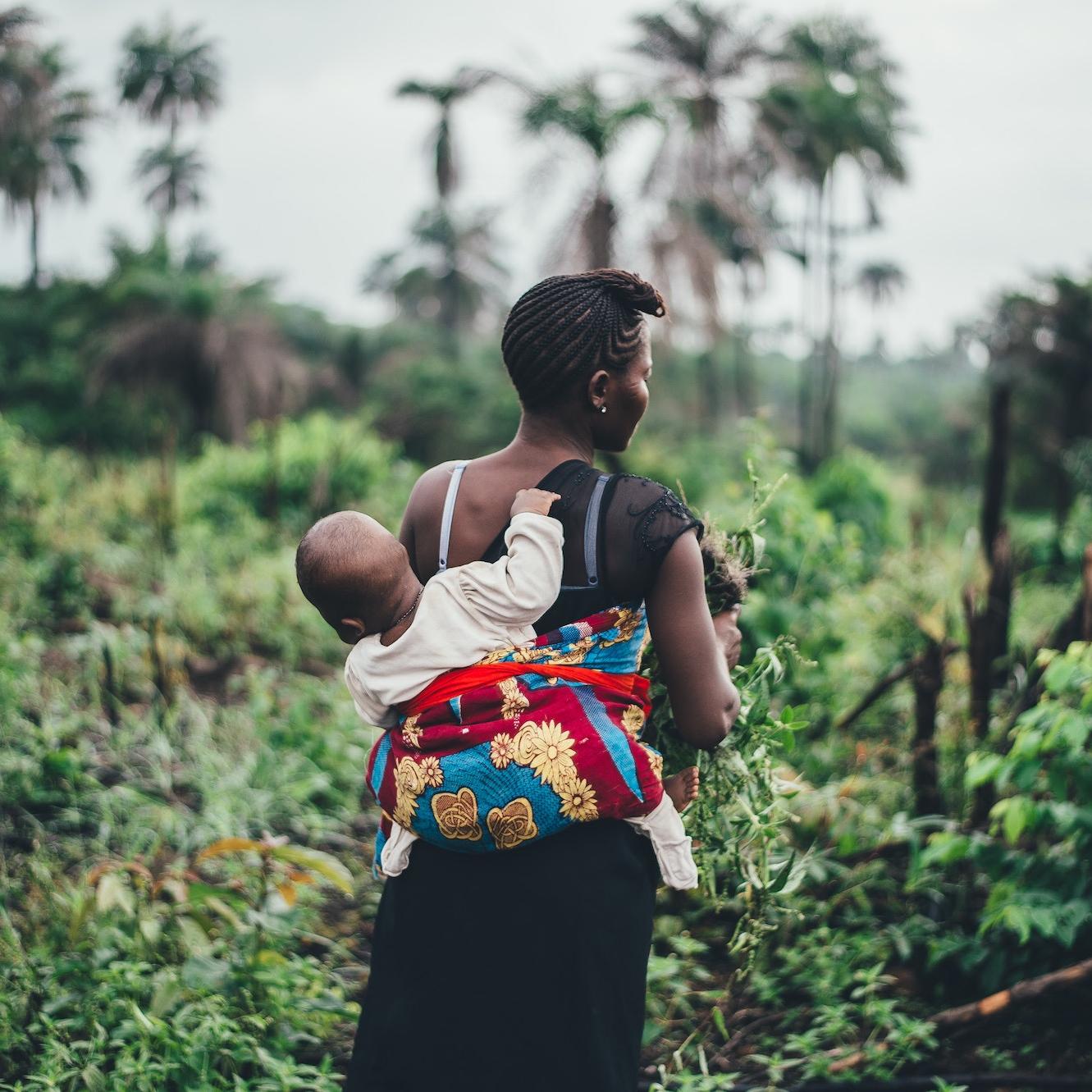
This article series is sponsored by Philip Morris International.
It’s hard to believe it has been nearly a decade since the United Nations Human Rights Council unanimously endorsed the Guiding Principles on Business and Human Rights, which today are considered the authoritative global standard.
The U.N. Guiding Principles made clear for the first time that all companies have a responsibility to respect human rights. They call on companies to put in place due diligence processes to mitigate negative human rights impacts, address impacts where they occur, and publicly report on their performance. They also emphasize that a company’s responsibility applies not only to its own operations, but also to business relationships across the value chain.
TriplePundit was curious about the impact of the guidelines and turned to an expert, Faris Natour. Natour is co-founder of the sustainability and human rights consulting firm Article One and leads the Human Rights and Business Initiative at the Center for Responsible Business at the University of California, Berkeley. For him, the U.N. Guiding Principles were a game-changer.
“They have had tremendous impact on business,” he told TriplePundit, “with many companies making significant progress in adopting the standards and strengthening their due diligence processes, including their responsible sourcing processes.”
“Today we are seeing companies investing in human rights, which we did not see before. For example, companies have created human rights departments—Pepsi has even appointed a Chief Human Rights Officer.”
Leading companies are digging deeper into their supply chains, where human rights risks are greatest, Natour said. “In the past, companies focused on where they had the most leverage—typically their tier-one direct suppliers. Now, they are going further down to where raw materials are sourced or resources are extracted to tier-three subcontractors, and they are directly engaging in a meaningful way with rights holders, the workers on the ground.”
What good looks like
The nonprofit Corporate Human Rights Benchmark (CHRB), which rates 100 of the largest listed companies against the U.N. Guiding Principles, also observed notable changes at some major multinationals.
Seventy-five percent of analyzed companies improved their scores since 2017, with “top movers” including Danone, Heineken, Kellogg and PepsiCo, according to CHRB’s latest benchmark.
As Natour indicated, more companies are going directly to where risk assessments identify the greatest threat of human rights violations. Perennial leaders from the CHRB list include Adidas, Unilever and Marks & Spencer. We’ve also seen companies including HP and Levi-Strauss hone in on ways to protect and invest in supply chain workers’ rights.
Another best practice is going beyond due diligence to set—and meet—voluntary targets on human rights.
Philip Morris International (PMI) has committed to eliminate child labor from its tobacco supply chain by 2025. After creating the Agricultural Labor Practices (ALP) program in 2011 to address child labor, PMI worked with Verité, a leading NGO in supply chain sustainability, to implement the program among its 350,000 farmers. The company and its suppliers also hired 2,600 field technicians to train farmers and workers on the ALP program, raising awareness about both their rights and their responsibilities and monitoring for compliance. In 2018, PMI and its suppliers monitored 88 percent of its farmers, identifying about 4,500 cases of child labor.
To address them, the company uses root-cause analysis to understand what is driving the situation on a particular farm. For example, when poverty forces children to help in the field, PMI and its partners work with farmers to improve yields or identify other income-generating work, allowing them to hire workers and cover school costs for their children. “We want to solve the issue—not just for that growing season, but once and for all,” said Anna Kletsidou, lead of social sustainability and human rights at PMI.
The road ahead
Despite progress from highly visible multinational companies, there are still headwinds. Though the CHRB’s latest ranking shows incremental improvement across the board, the majority of companies still underperform against the U.N. Guiding Principles.
Natour also points to small and medium enterprises that need to be brought into the discussion, as well as the increasing reach of artificial intelligence (AI) and automation.
“Every company now is a tech company in some way,” Natour explained. “And we are seeing companies starting to realize the privacy and other issues that come with technology.” He cites AI risks related to facial recognition and data mining in the retail sector, as well as the impact on jobs being replaced by automation in the transportation and agricultural sectors: “Getting ready for these issues is critical.”
The U.N. Guiding Principles provide the road map. The rest is up to industry, together with partners, to understand the emerging risks and work to mitigate them.
Image credit: Annie Spratt/Unsplash
Could 3D-Printed Homes Solve the Global Housing Crisis?
(Image: Constructed in only 24 hours, these homes are the start of the world's first 3D-printed housing development.)
An estimated 1 billion people, more than 10 percent of the world’s population, do not have adequate shelter. Experts predict that number will grow to 3 billion by 2050. But not if the construction and technology company Icon has anything to say about it.
This month, the Austin, Texas-based company, together with the San Francisco-based housing nonprofit New Story and its Mexican partner Échale, unveiled a pair of 3D-printed homes in the Mexican state of Tabasco. If all goes as planned, they'll be the start of the world's first 3D-printed housing development. What’s more, the homes were built in 24 hours and will cost residents only $20 a month.
Icon, which says it's on a mission to make dignified housing accessible to everyone, everywhere, describes the homes as “the future of human shelter.” Already, the company has closed a seed round of $9 million in funding that included, according to its website, investments from Silicon Valley, a renowned international developer and America’s largest homebuilder, among others.
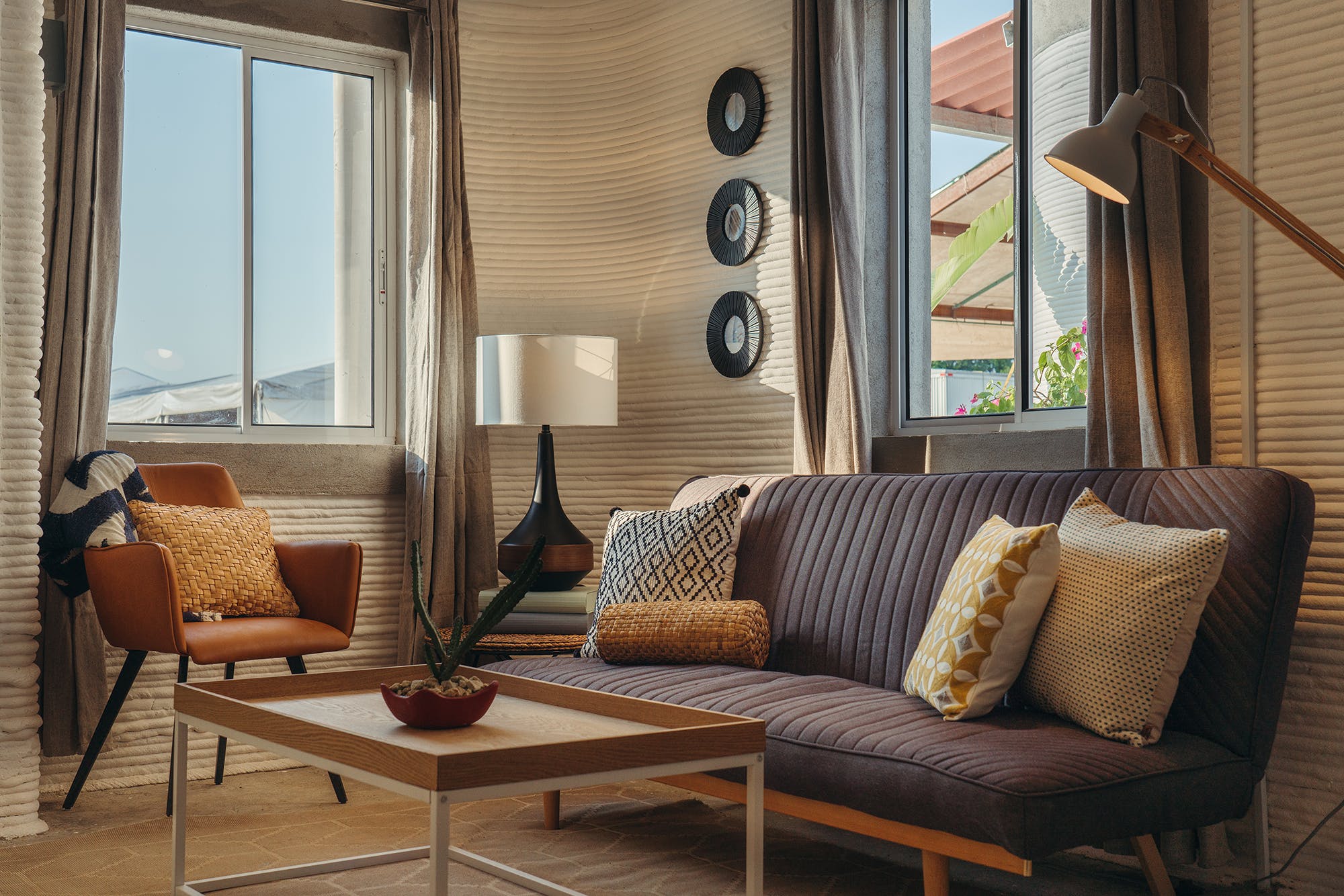
Printing homes is simple, affordable and environmentally friendly, partners say
According to Icon, the process of printing a home is relatively simple. Its branded 3D home printer, the Vulcan II, churns out layers of cement that amass to form the walls of the home. What takes more time is installing the non-printed fixtures like doors and windows at the end of the process.
Icon’s engineers designed Vulcan II to produce resilient, single-story homes up to 2,000 square feet. The company also claims its printer is faster, cheaper and creates less waste than traditional homebuilding methods, and allows for more design freedom. It can print at night and during power shortages, and it operates from a tablet, so only a few workers are required.
“With 3D printing, you not only have a continuous thermal envelope, high thermal mass and near zero waste, but you also have speed, a much broader design palette, next-level resiliency, and the possibility of a quantum leap in affordability. This isn’t 10 percent better, it’s 10 times better,” said Jason Ballard, co-founder of Icon, who has previous experience working in a homeless shelter and as an environmental consultant.
Icon also uses a cement mixture that its designers say is stronger than traditional building materials and can withstand extreme weather conditions. Resting within a seismic zone, the new 500-square-feet homes in Tabasco are being engineered above local standard safety requirements, including robust foundations. Homes will include two bedrooms, a living room, a kitchen and a bathroom.
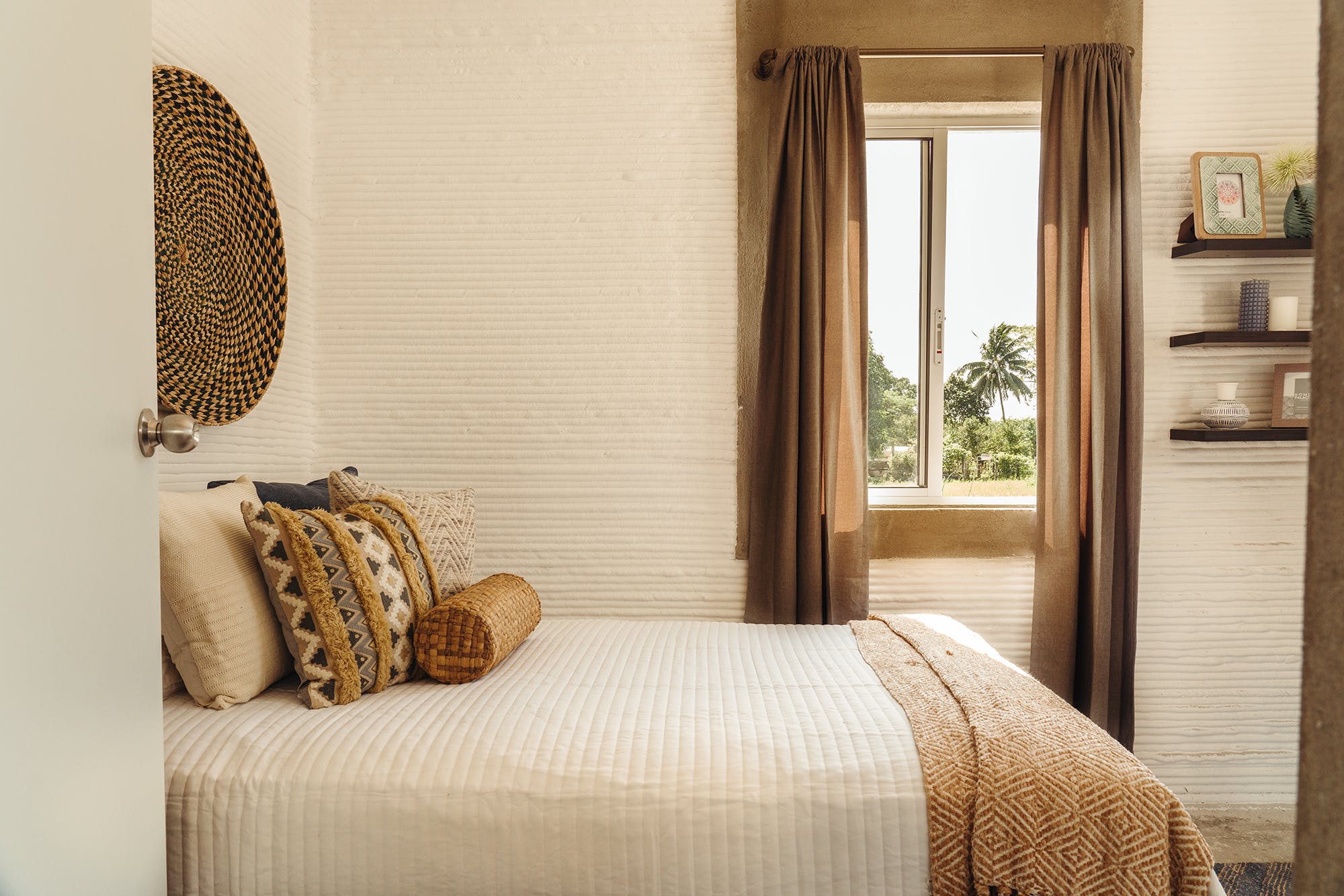
While New Story is funding the up-front cost of building the homes and infrastructure, residents will be required to pay a small mortgage of 400 pesos (about $20) per month for seven years. The mortgages come with zero interest, and the money will go into a community investment fund.
To select who will live in the 50-home community, New Story worked with the local government and Échale to survey more than 500 families in Tabasco, where the median family income is $77 per month. The rural state also has the highest unemployment rate in Mexico, and the majority of the families there are from an indigenous population historically left out of government programs. The families selected were those found to have the greatest financial and physical needs.
“3D printing for housing is a technology applied to a sector that has historically required a lot of labor," said Verónica Contreras, foundation director at Échale. "The fact that this technology is being used to help the people with the biggest social gap turns it into a humanized technology."
New Story and Échale also solicited feedback from future residents about the community's design. The vast majority of families wanted abundant green spaces in the neighborhood and flat roofs so that it would be easier to add to or customize their homes.
 (A Tabasco family stands in front of the Vulcan II hard at work on a new home.)
(A Tabasco family stands in front of the Vulcan II hard at work on a new home.)
Addressing the housing crisis north of the border
It’s not only developing countries that face a growing housing crisis. In the U.S., experts say stagnancy in home building has not kept up with demand and population growth, driving up costs past the point of affordability for the average person.
Icon, the first company in the U.S. to secure a building permit for a 3D-printed home, is also working to print homes north of the border.
In its hometown of Austin, Icon is working with Mobile Loaves and Fishes on the Community First! Village, a 51-acre master planned community that will provide affordable, permanent housing for men and women coming out of chronic homelessness. The company recently constructed a nearly 500-square-foot Welcome Center in the community in less than 27 hours.
Across town, real estate investment company Cielo Property Group is working with Icon and the city of Austin to redevelop underutilized properties and help bring permanent housing using 3D printing technology to the city.
Many in the home-building industry are wondering if 3D-printed homes will be the next big shift in the sector. Icon certainly hopes so and is doing what it can to help accelerate the pace.
Images courtesy of Icon
Despite the Outcome in Madrid, Business Climate Action Continues


By Aron Cramer, President and CEO, BSR
As we enter the decisive decade of the 2020s—when significant steps toward decarbonization have to happen if we are to stave off the worst impacts of climate change—the 2019 U.N. climate talks in Madrid, COP25, was a poor jumping-off point.
This year’s COP was designed to pave the way for greater ambition on the part of national governments. Unfortunately, they failed to live up to the importance of the moment. In advance of the climate conference, the U.N. Environment Program’s Emissions Gap report called for annual emissions reductions of 7.6 percent if the world is to limit global heating to 1.5 degrees Celsius. Measured against that benchmark, the last COP of the 2010s represents a serious setback.
There were multiple disappointments in Madrid. There was no agreement on alignment of carbon market rules, which would provide guidelines on how countries can trade emissions internationally. Also, countries did not prioritize the ground rules that would protect vulnerable nations after a climate disaster.
Even the aspirational language emerging from the negotiations took a step backward from the more concrete commitments to heightened ambition in the run-up to next year’s pivotal COP26, when the “ratchet” of national contributions is intended to happen. And while 121 nations have committed to net-zero emissions, this is less significant in terms of impact: These countries represent only 15 percent of global emissions.
There is little doubt that this reflects, in part, the absence of American leadership under the current administration in Washington. While American business and investors were visible and there was political representation from a climate-friendly delegation of congressmembers, state governors, and mayors, they are not able to shift national government commitments. While the We Are Still In coalition remains vibrant and important, it cannot make up for the loss of climate diplomacy from the White House. And with the exception of the European Union, other major emitting nations did not step up either.
But while this was clearly a COP where national governments did not seize the day, there were still some glimmers of hope.
Because while national government action matters—a lot—it is far from the only pathway to progress. And in many other areas, COP25 showed important steps forward. Many businesses, reflecting what is known in the hallways of the climate talks as “the real economy,” continue to make new commitments. Nearly 800 companies are now committed to net-zero emissions by mid-century.
While many heavy-emitting industries remain on the sidelines, there are some interesting new commitments. For example, Spanish oil and gas producer Repsol made its COP host country proud by announcing the first net-zero commitment in that sector to include Scope 3 emissions. More broadly, the number of companies joining the U.N. Global Compact’s Climate Ambition Coalition, committing to a 1.5-degree target, has doubled since September, expanding to 177 companies representing US$2.8 trillion in market capitalization. Goldman Sachs and AXA have both announced new divestment strategies.
In addition to action by businesses and investors, public demand for climate action continues to be heard. Coinciding with COP, Time magazine named Greta Thunberg the Person of the Year for 2019, and “climate emergency” was named the word of the year by Oxford Dictionaries. It is clear public expectations about climate action are stronger than ever and growing.
What does this mean for business? Looking ahead to 2020, business has both the interest and the opportunity to continue to raise its ambition. Companies can act by joining the growing parade of businesses committed to 100 percent renewable energy in service of augmented science-based targets and aligning their business strategies with the 1.5-degrees Celsius target.
Companies also can enable progress by working with their supply chains as the number of businesses seeking deep Scope 3 emissions cuts continues to grow. And finally, business should leverage its influence by calling on governments to drop the timidity that was—unfortunately—on display in Madrid. A loud business voice was vital in the run-up to the Paris Agreement in 2015, and it will be essential to delivering the strong result that will be badly needed at COP26 next November in Glasgow.
The need for heightened urgency is coming from the science, the streets and the employees of global companies. 2020 must be a year when the promise of Paris is given new life in Glasgow. With business engagement in the year ahead, we can redefine Madrid as a footnote in history, rather than lasting damage to climate ambition.
Previously posted on BSR and the 3BL Media News Room.
Image: Jorge Fernández Salas/Unsplash
Stop Making This Mistake in Your Climate Strategy
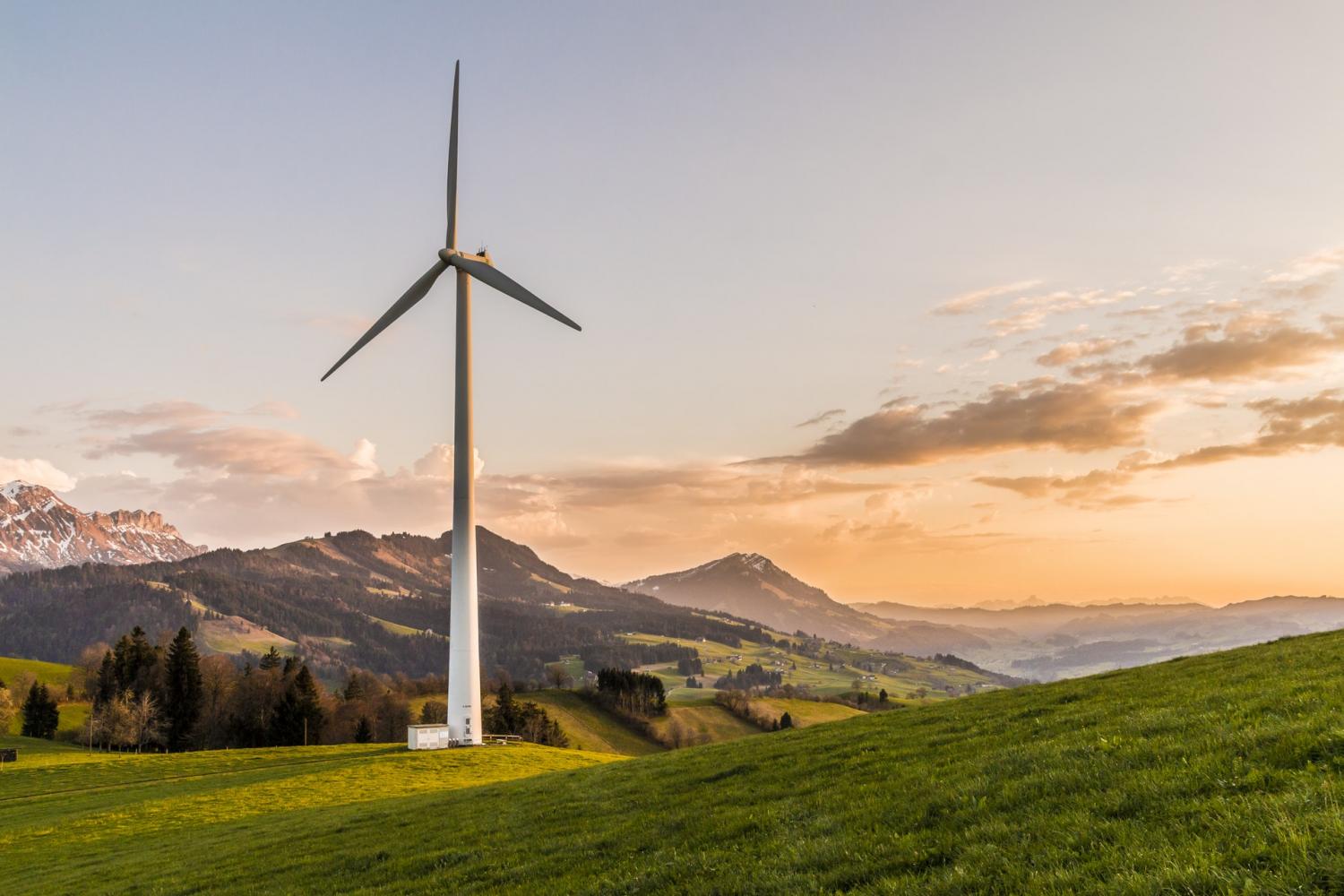

“The point of no return is no longer over the horizon,” Secretary-General António Guterres said at the start of the annual U.N. climate talks (COP25), which wrapped in Madrid on Sunday. In the following weeks, representatives from almost 200 countries negotiated how to deal with the threat from climate change at a global level. Many U.S. corporate collaboratives also used the event as a backdrop for their ambitious climate announcements.
Although changing weather trends already impact businesses, private-sector climate leadership is focused almost exclusively on decreasing greenhouse gas emissions rather than also actively adapting to climate impacts. This is a grave omission that goes against the historic 2015 Paris climate agreement and hurts shareholders, communities and the planet.
For the last five years at these annual COP proceedings, high-level government leaders arrived determined to both decrease greenhouse gas emissions and adapt to the current and future changes that aren’t avoidable any longer. Global mean temperatures have already risen by over 1 degree Celsius above pre-industrial levels, causing changes such as more frequent and extreme weather and gradual shifts in rainfall and sea levels. Man-made climate change is locked in for centuries, regardless of future global greenhouse gas reductions.
But many U.S. corporate collaborations have emerged solely to work in partnership on climate change mitigation. These include We Are Still In, America’s Pledge, We Mean Business and a new entrant, the Certified B Corp community. These groups' overarching climate policy priority is to keep average global temperature rise under 1.5 degrees Celsius above pre-industrial levels this century.
Fully aligning corporate actions with the Paris agreement requires corporations to give climate resilience the same level of ambition as emissions reductions. Yet these business coalitions don’t specifically embrace the Paris agreement’s set expectations for planning, implementing and reporting on climate adaptation efforts.
Adaptation is missing from most corporate climate action strategies
Investors define adaptation and resilience as the ability to anticipate, absorb, accommodate and recover from the increased risk and impact of climate change.
Why is the absence of a clear commitment to adaptation so egregious? Because adaptation is material to corporations’ operations and their future prosperity. Global supply chains, business continuity and market growth depend on it. The major credit rating agencies—Standard & Poor’s and Moody’s—certainly grasp that. Both include climate change risks in their evaluations, and Standard & Poor’s even describes how it calculates a resilience benefit in its evaluation of green projects.
Consider also the Financial Stability Board’s Task Force on Climate-related Financial Disclosures. Its guidelines, elements of which are being incorporated into law in some European countries, provide counsel on how investors assess the physical impacts of climate change on their current and future portfolios.
Since physical climate risks impact operations, workforce, markets, infrastructure, raw materials and assets, the Climate Bonds Initiative now certifies bonds not only based on potential for greenhouse gas reduction, but also on their contribution climate change resilience. Even the U.S. Government Accountability Office recently released a repot entitled, Limiting the Federal Government's Fiscal Exposure by Better Managing Climate Change Risks.
Why do companies overlook adaptation?
One reason why corporate collaborations may be avoiding action on climate adaptation is because adaptation is less a sustainability issue and more a legal, governance, finance, human resource and supply chain issue. The challenge has pivoted from an exclusive focus on how we can protect the planet to include how we can protect humans and assets from climate impacts that could create both the market crisis and the humanitarian crisis of our time.
Already, people around the world are enduring deadly heat waves, food insecurity, the spread of disease, imperiled ecosystems, and damaged infrastructure exacerbated by climate change. Scientists calculate that those living in poorer countries are 10 times more likely to be affected by a climate disaster each year than those in wealthy countries. But these impacts also affect developing countries like the U.S. and are expected to worsen. Many climate impacts will increasingly impact lower-income Americans more severely.
Why adaptation matters to purpose-driven businesses
Some corporate climate action collaborations have at least been clear with their members that they have only a greenhouse gas reduction emphasis in their scope. But the omission of adaptation is particularly grave for corporate collaborations that have a remit beyond climate action. This could, arguably, include the B Corp community—which operates under the mission to work “toward reduced inequality, lower levels of poverty, a healthier environment, stronger communities, and the creation of more high-quality jobs.” When corporations sign on to a collaboration’s climate policy agenda in the context of this type of mission, they are led to believe their carbon reduction efforts are enough.
However, without adaptation as a climate action priority—at a minimum, upgrading or moving at-risk infrastructure, using climate resilient crops and adding spare capacity—companies are not serving this mission. They are not working to mitigate physical climate risks that increase inequality, have a disproportionate risk on impoverished communities, increase negative health outcomes, and disrupt communities.
Of course, they also miss the opportunity to create adaptation-related jobs. Besides being a business imperative, assisting in adaptation offers opportunities for corporations. It can open doors to new markets, build efficiencies and enhance communities while addressing risks.
For instance, building flood defenses and stormwater management systems, strengthening water supply and distribution systems, diversifying forest species, creating cooling technologies for outdoor workers, and strengthening electric grid resilience, among other things, are big business already. Plus, helping communities adapt can ensure business continuity and protect the middle-class market that has sparked so much of this decade’s business prosperity.
The bottom line
Corporate failure to adapt necessarily results in higher costs to the business, along with loss of lives and livelihoods. So, here’s the call to action for corporate coalitions on climate: Recognize that mitigation and adaptation are complementary strategies for reducing unmanageable change and managing climate risks. You can also benefit from fresh opportunities created by these strategies—and by exercising adaptation leadership in your communities.
Image credit: Pixabay
From UBS to Goldman Sachs, Major Investors Take a Stand for Climate Action


(Image: Goldman Sachs headquarters in Battery Park, New York. Goldman is just one of several major investors to take a public stance on climate change this past week.)
For the global economy to decarbonize quickly, there is no substitute for political leadership from the top. Nevertheless, investors and other financial stakeholders are positioned to hold the torch until national governments come up with a more aggressive position on climate change.
A group of more than 600 investors called for an end to fossil fuel subsidies during the COP25 climate talks in Madrid last week. The talks concluded in a shambles, but the pledge to act has continued to grow.
Investors are concerned about stranded fossil fuel assets
Though the world's two largest investors, BlackRock and Vanguard, are not part of the group of 600, it's still a financial powerhouse. UBS Asset Management and the California Public Employees’ Retirement System (CalPERS) are just two of the big-ticket investors on the roster.
These investors clearly anticipate that stronger climate legislation is inevitable, and they want more clarity on the risks involved in clinging to fossil fuel investments. “One of the biggest worries for investors is the treatment of ‘stranded assets’, such as oil, coal and gas reserves, which could become unusable depending on climate legislation," reports Billy Nauman of The Financial Times.
A push for more disclosure
As with many aspects of decarbonization, transparency is a key issue in the area of stranded assets. The group urges the adoption of risk disclosure platforms through the Task Force on Climate-related Financial Disclosures.
The Task Force is supported by Mark Carney of the Bank of England and is chaired by U.S. businessman and presidential candidate Michael Bloomberg. It aims to develop voluntary and “effective” financial disclosure platforms that provide investors, lenders, insurers, and other stakeholders with accurate information about the risks associated with climate change.
The work of the Task Force is also aligned with the organization Principles for Responsible Investment (PRI), a sustainable finance organization backed by the United Nations.
Financial stakeholders take a stand for climate action
The odds of avoiding catastrophic climate change are still good, if the pace of decarbonization picks up. However, accelerating the decarbonization trend means that nations will, eventually, adopt stronger climate policies.
In what could be a harbinger of things to come, last week Reuters reported that Switzerland is considering legislation to pull the Swiss central bank—and its $800 billion in assets—out of fossil fuel companies.
That should be a warning sign. But Nathan Fabian, chief responsible investment officer for the PRI, told The Financial Times that only a few companies have positioned their assets to prepare for a more aggressive decarbonization timeline. For example, almost 2,600 firms have signed on to PRI’s guidelines, but Fabian estimates that only about 2 percent of them have prepared accordingly.
Still, there are signs that the collapse of the Madrid talks has galvanized the financial community.
On Monday, the shareholder advocacy group As You Sow filed a shareholder proposal with ExxonMobil and co-filed another one at Chevron, asking the companies to align with the Paris Agreement by decarbonizing their value chain, not simply by improving energy efficiency in their operations. Among other stakeholders, the filings were backed by the Church Commissioners for England, which manages the Church of England’s endowment fund.
In a press statement announcing the filings, As You Sow cited other financial stakeholders pressuring the two companies. That includes the organization Climate Action 100+, which represents 370 global investors with more than $35 trillion in assets.
Climate Action 100+ is coordinated by the Asia Investor Group on Climate Change, U.S.-based Ceres, the Australia-New Zeland Investor Group on Climate Change, and the Institutional Investors Group on Climate Change (IIGCC) in addition to PRI. And it includes the Church Commission and the New York State Common Retirement Fund among members.
In another interesting development, on Sunday the financial heavyweight Goldman Sachs announced a set of measures aimed at stepping up the decarbonization of its stake in the global economy.
As reported by CNN, that includes a 10-year, $750 billion funding commitment for projects that involve decarbonization and inclusive growth.
The bank also pledged not to finance drilling in the Arctic, including the Arctic National Wildlife Refuge in Alaska. It's also the first major American bank to rule out funding new thermal coal mining and coal power projects.
Look for more major announcements from leading financial institutions as we move into 2020.
Image credit: Thomas Dimson/Flickr
Youth Activists Reimagine Travel in a Warming World


(Image: A group of youth activists protest in favor of indigenous rights and climate action at the COP25 climate talks in Madrid.)
Even as scientists issue dire warnings about the impacts of climate change, many still seem to view it as an amorphous threat that doesn't relate to them.
"Risks are most salient if they apply to you,” Robert Lempert, a principal researcher at the nonprofit public policy think tank RAND, told Wired last fall. Lempert put that notion to work as lead author of the fourth U.S. National Climate Assessment, which broke down potential climate impacts by region—in part to attract attention from lawmakers, Lampert said.
Fridays for Future, the youth climate action movement launched by Greta Thunberg, takes a similar approach in a new social campaign aimed at raising awareness of "local warming."
"Despite scientific evidence, decades of diplomatic summits and repeated calls for action, some people still do not believe that climate change is real, and impacting us today," the group said in a press statement. "However, it seems that more people are willing to accept that change is afoot when confronted with it at a local level."
To bring the conversation home, Fridays for Future redesigned vintage tourism posters to reflect how destinations would look under current climate scenarios.

This grim view of future travel is not so far off base. In November, Venice experienced its worst high-tide flooding in over 50 years. California wildfire seasons continue to break records. And top tourist destinations from the South Pacific to the Arctic Circle are already being impacted by climate change.

The local context theory also has data behind it. In the U.S., 67 percent of people worry climate change will harm future generations, but only 42 percent think it will harm them personally. In New Zealand, people living near a coastline are more likely to accept climate science. And in the U.K., concern about climate change rose alongside perceptions that "it is already having an impact" in the country.

The images also call to mind research published by Climate Central this fall, which indicates the impact of rising sea levels may be more widespread than previously thought. As reported in the New York Times, entire regions could all but disappear by 2050—including Southern Vietnam and Ho Chi Minh City; most of the Shanghai, China, metro area; and almost all of Mumbai, India.
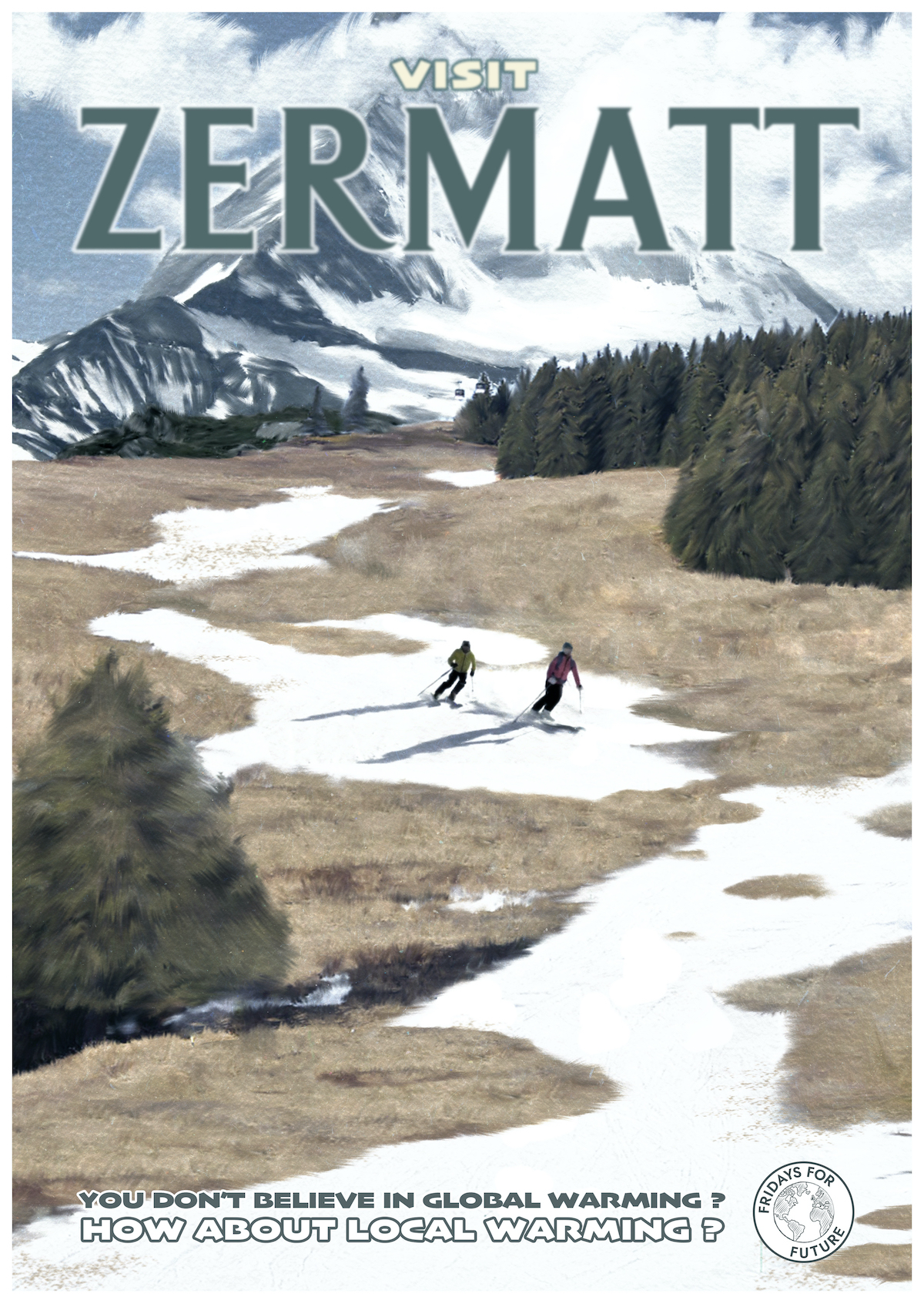
Youth activists say, "We won't be silenced"
The campaign follows historic action from the activist group during U.N. climate negotiations in Madrid last week. On Wednesday, Dec. 11, hundreds of youth climate strikers commandeered the main stage at the COP25 climate talks, demanding greater ambition from developed nations.
When security tried to usher youth activists away, they staged an impromptu sit-in. It was an unprecedented public stance in what are usually highly regimented proceedings, as shared by teenage Scottish climate activist Dylan Hamilton on Twitter:
Ultimately, more than 300 people—including indigenous leaders and youth activists—were pushed out of the event space. "People were bullied & kicked," an account affiliated with Fridays For Future Germany tweeted on Wednesday. "Then we were kettled on the street & refused to get back in – but we won't be silenced!"
Those words proved prescient, as protesters took to the streets around the world again on Friday, Dec. 13, and 16-year-old Thunberg was named Time magazine's Person of the Year.
Image credits: John Englart/Flickr, Fridays for Future, Dylan Hamilton/Twitter and Jake Blucker/Unsplash
Turning Problems Into Profits in the Pacific Garbage Patch


The Ocean Cleanup has returned with its first plastic catch from the Pacific Ocean. The Dutch nonprofit aims to rid the ocean of 90 percent of its plastic by 2040—partly by targeting ocean garbage patches, or gyres, the largest being the Pacific Garbage Patch located between Hawaii and California.
The plastic capture happens via a passive system that includes a 2,000-foot cork floater designed to mimic a coastline, along with a skirt extending 10 feet below the surface and a parachute anchor. Winds, waves and currents all help the system move faster than plastic, retain an arched shape to keep the capture inside and remain flexible during storms.
The first haul of 60 bags, sized 35 cubic feet, included both the massive and the minute, from commercial fishing nets to microplastics one millimeter in size. Once fully scaled, the nonprofit estimates that its fleet of passive collection systems could halve the size of the Pacific Garbage Patch every five years.
One would think cleaning the ocean would be enough responsibility for a small nonprofit, but The Ocean Cleanup has ambitious plans for its catch. On the heels of completing its first mission to the Pacific, the organization announced plans to create “attractive, sustainable products” from the plastic it collects and use the proceeds to fund future cleanups.
Product specifications have not been released, but the organization told Fast Company the infrastructure to clean, sort and recycle the plastic is now in the works.
The impact of collecting and recycling garbage patches
The problem of these garbage patches may seem remote and even irrelevant to daily human life and business, but these growing patches are not so far removed from our daily lives.
Generally speaking, plastic pollution costs the world at least $13 billion a year in lost tourism due to plastic on beaches, impacts to the fishing industry, ecosystem degradation and other damages. The World Economic Forum estimates that two-thirds of the world’s fish stocks have ingested plastic. These plastics, as well as their toxins, can harm and kill wildlife.
On a larger scale, the free-roaming accumulation of plastic affects ecosystem services on which global economies rely. Loss of biodiversity threatens the stability of ecosystem services like food provision, water purification and carbon sequestration.
One recent study found a 1 to 5 percent annual reduction of marine ecosystem services due to oceanic plastic pollution in 2011, equivalent to a loss of $500 billion to $2.5 trillion.
Pollution becomes a solution — certified ocean plastic products
The Ocean Cleanup’s first novelty products are slated to come out in September 2020. And they'll have plenty of company in the marketplace, as an increasing number of companies claim to use plastic recovered from the ocean.
Some of these are legitimate, but others are not—and as of now, there’s no way to tell. Quality assurances provider DNV GL has developed a standard and definition for ocean plastic and will certify all of The Ocean Cleanup's products.
“Welcoming the first catch of plastic on land is the moment we have been looking forward to for years,” Boyan Slat, founder and CEO of The Ocean Cleanup, said in a press statement. “I believe we can use this trash to turn a problem into a solution by transforming this unique material into a beautiful product. As most people will never go to the Great Pacific Garbage Patch, through these products, we aim to give everyone the opportunity to take part in the cleanup.”
Meanwhile, the nonprofit is preparing a new design, System 002, for its next phase of plastic collection.
Image credit: The Ocean Cleanup
Hilton Expands Food Waste Reduction Initiative to Nearly 300 Hotels


As the largest hotel on the West Coast, the Hilton San Francisco prepares well over 1 million meals for guests and conference attendees every year. That's a whole lot of chicken marsala, cesar salad and vodka rigatoni. Unfortunately, a significant percentage of the food it purchases and prepares goes to waste due to inefficient use, poor storage and stock management, and customer plate waste.
For hotels such as Hilton, throwing away food presents serious financial, environmental and social concerns.
According to the U.S. Food and Drug Administration, between 30 and 40 percent of the nation’s food supply goes to waste. This adds up to 133 billion pounds or $161 billion worth of food. Experts say an estimated 40 percent of the total comes from consumer-facing business, including restaurants and hotels. What’s more, the World Wildlife Fund (WWF) predicts that about 11 percent of global greenhouse gas emissions could be eliminated if food waste were brought to zero.
Hilton takes action to reduce food waste
Following a pilot at 50 hotels, including in San Francisco, Hilton will expand its food waste reduction program to all North American properties, the company announced this month.
Hilton says the move is part of a strategy to halve food waste in its hotels by 2030. Its program is based in part on the WWF and American Hotel and Lodging Association’s Hotel Kitchen Toolkit, which provides resources to help hotels use food wisely and dispose of leftovers in a sustainable way.
For Hilton, the pilots resulted in a number of innovations, the company said, from “no-waste” catering menus to thoughtfully designed buffet presentations. The pilots also illustrated that producing less food requires an integrated approach involving hotel management, catering, purchasing, services and events, but can help to streamline menu planning and reduce over-production.
In terms of numbers: Pilot hotels in the Americas diverted more than 6 million pounds of food waste from landfills in 2019, an equivalent of more than 11,000 megatons of carbon emissions, according to Hilton. The Hilton San Francisco, for example, reduced food waste by purchasing locally-sourced and in-season products, working with “imperfect produce” sources, and using the whole product wherever possible.
Following the guidance of the Hotel Kitchen Toolkit, the company donates any remaining viable food to local shelters and agencies. For any food that cannot be donated, Hilton composts it, saving approximately $7,000 per month in waste hauling fees, the company says.
 (Image: Hilton plans to scale food rescue and donation alongside its efforts to reduce food waste.)
(Image: Hilton plans to scale food rescue and donation alongside its efforts to reduce food waste.)
Helping address food insecurity
By donating surplus food, Hilton is also tackling food insecurity in the United States, which effects an estimated 41 million Americans, including 13 million children.
Through the expanded program, each Hilton hotel in North America will be expected to set a food waste diversion and donation goal for 2020 and report their progress. Hotel management can select organizations to work with from a directory of food donation and diversion partners from across the country, as well as connect with one another to share best practices.
With additional local donation initiatives in place once the program is fully rolled out, Hilton expects to donate nearly 100 tons of food in 2020, enough to feed nearly 160,000 people.
This builds on existing food donation partnerships. The Hilton San Francisco provides nearly 2.5 tons of food to Food Runners annually. The Waldorf Astoria Las Vegas donated nearly a ton of food to Three Square over the past year. And the New York Hilton Midtown donates regularly to the Rethink Food Program. Hilton says it plans to expand its donation efforts globally in the future.
Hilton is not alone
A number of other hotels are also rolling out the Hotel Kitchen Toolkit—and seeing results.
Marriott, the largest hotel company in the world, tested the Toolkit at 10 of its properties and is now rolling it out globally as part of its goal to halve food waste by 2025.
Speaking at Bloomberg’s second annual The Year Ahead: Luxury summit last month, Denise Naguib, vice president of sustainability and supplier diversity for the hotel giant, confirmed that food waste will be a major focus of its environmental strategy in 2020. “If we are going to tackle major issues against climate change, we need to tackle food waste,” she said.
Hyatt is also launching the Toolkit at its 875 hotels around the world, with each required to put in place a food waste management plan in support of the company’s goal to reduce food waste by 40 percent by the end of next year. Already, the hotel has seen a 50 percent increase in the number of hotels reporting donation of excess food, and it is testing an app that facilitates selling surplus food at a discount toward the end of a meal period.
Hyatt also found that simple adjustments can yield big results. Through its participation in the initial pilot, the Hyatt Regency Orlando reduced food waste at buffets by introducing cylinders and dispensers to control portion sizes, decreasing serving dish sizes, and using buffet servers with adjustable tray heights that give the impression of always being full.
Results add up
In the pilot phase alone, participating hotels saw at least a 3 percent reduction in food costs while using the Toolkit, and more than 90 percent of hotel staff surveyed said they want to take action to reduce food waste, according to WWF and the Association.
From a total waste perspective, participating hotels reduced food waste by 10 to 38 percent in the first 12 weeks. If scaled across the industry, experts predict the Toolkit could eliminate half a million tons of waste within a year.
Now that’s a lot of fettuccini alfredo and tiramisu.
Image credits: Kelly Jean and Vernon Raineil Cenzon via Unsplash; Hilton Hotels
